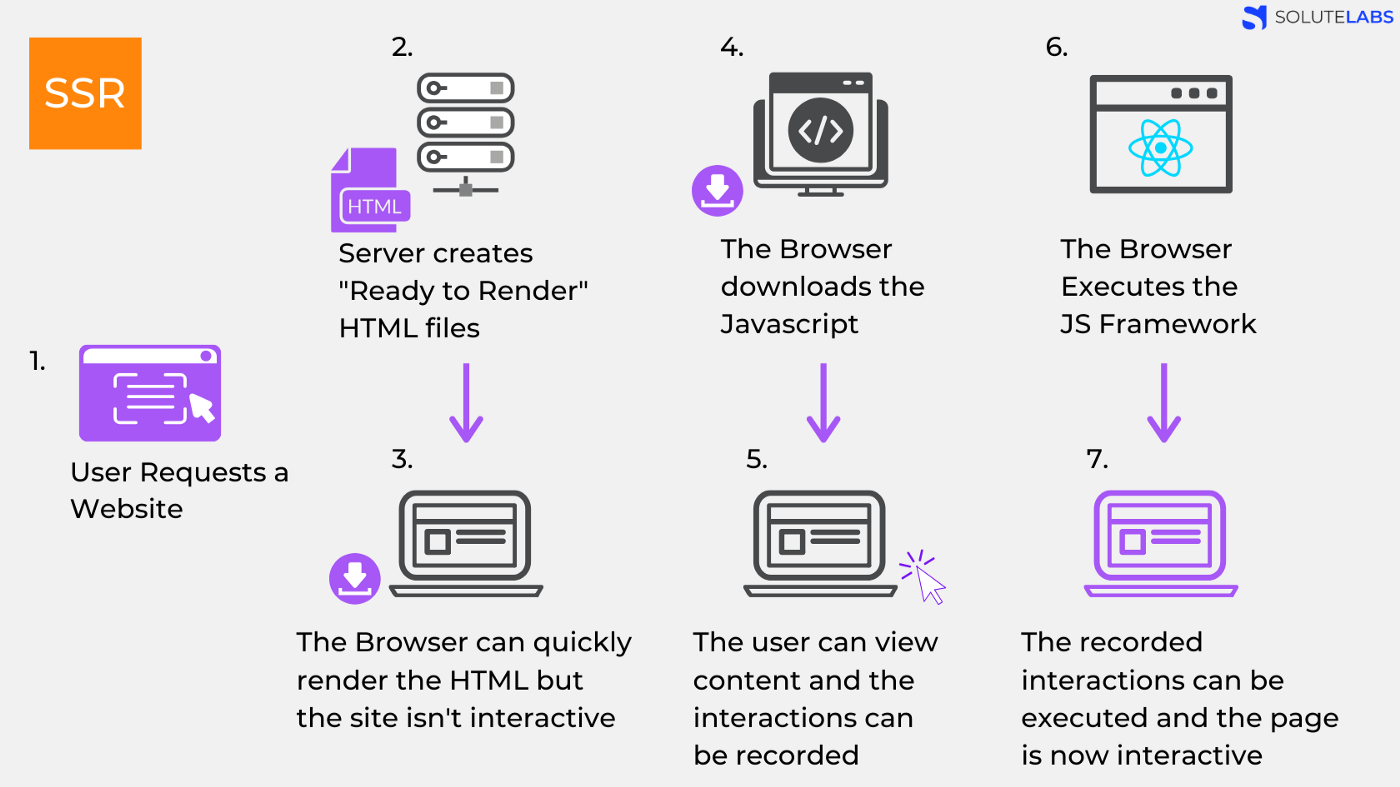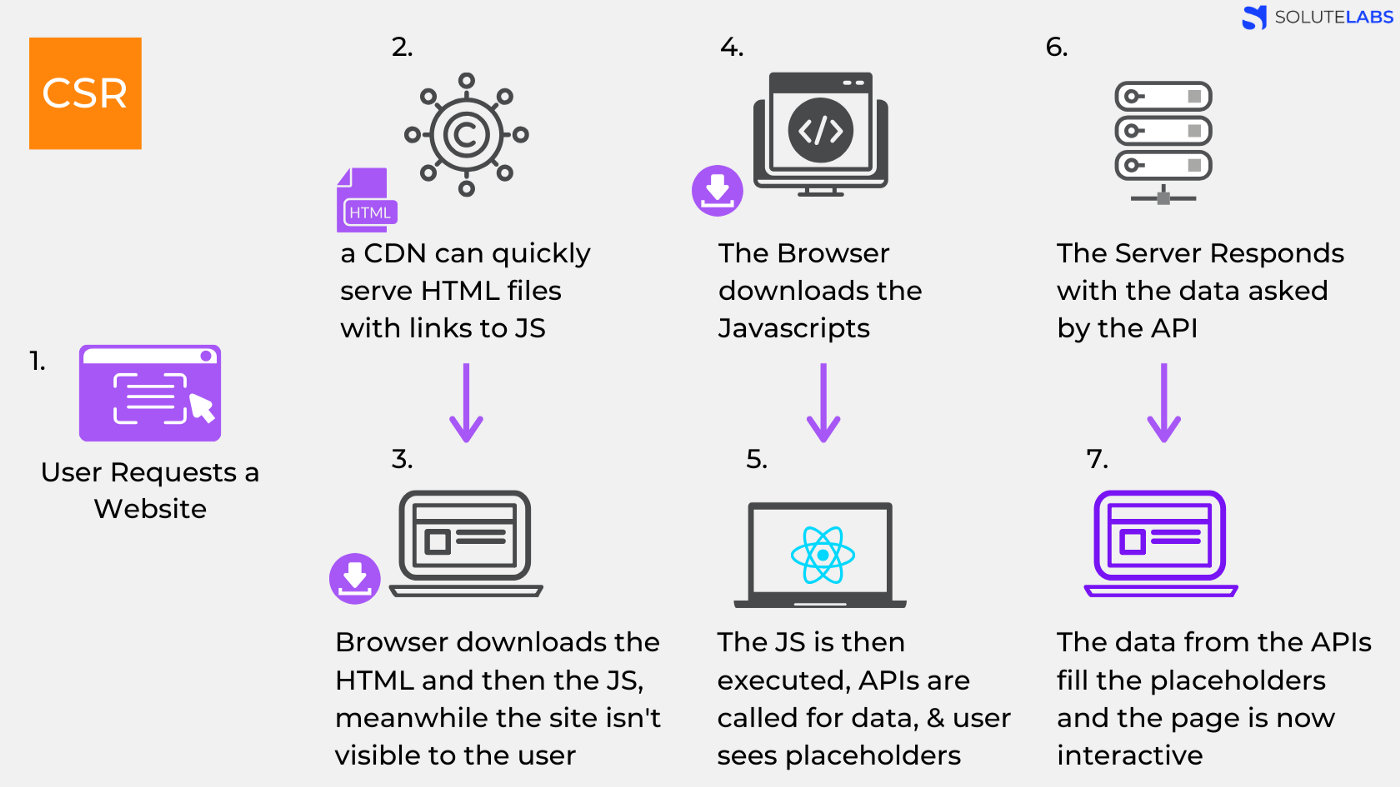# When to Use Static Generation v.s. Server-side Rendering
See section When to Use Static Generation v.s. Server-side Rendering (opens new window) of the Next.js tutorial:
- You should ask yourself: "Can I pre-render this page ahead of a user's request?"
- If the answer is yes, then you should choose Static Generation.
- If you cannot pre-render a page ahead of user's requests and the page content changes on every request, use Server-side Rendering. It will be slower, but the pre-rendered page will always be up-to-date.
- Use client-side JavaScript to populate frequently updated data (for instance: the view changes often in terms of the user and the internet connection is slow).



# What is the difference between SSR an Server Side Component?
The main difference between Server-Side Rendering (SSR) and Server Components lies in their approach to rendering and their place in the application lifecycle. Let me break it down for you:
- Server-Side Rendering (SSR):
SSR is a technique where the initial HTML of a page is generated on the server for each request . When a user makes a request to your site, your server generates the HTML at that time (runtime) and then returns the HTML, JSON data, and JavaScript instructions back to the client's browser .
Key characteristics of SSR:
- The entire page is rendered on the server for the initial request.
- The server sends a fully formed HTML page to the client.
- After the initial load, subsequent interactions may be handled client-side.
- SSR can improve initial page load times and is beneficial for SEO.
- Server Components:
Server Components, on the other hand, are a more recent innovation, particularly associated with React and frameworks like Next.js. They allow you to render specific components on the server .
Key characteristics of Server Components:
- They execute in a separate module system from Client Components to avoid accidentally exposing information between the two .
- They can access server-side resources directly (like databases or file systems) without exposing sensitive information to the client.
- They can reduce the amount of JavaScript sent to the client, as their rendering logic stays on the server.
- They can be used alongside Client Components in the same application.
The main differences
- Granularity: SSR typically renders entire pages on the server, while Server Components allow for component-level server-side rendering.
- Interactivity: SSR pages become interactive after the JavaScript loads on the client, while Server Components can coexist with interactive Client Components from the start.
- Data fetching: With SSR, data is typically fetched for the entire page. Server Components allow for more granular data fetching at the component level.
- Performance: Server Components can potentially offer better performance by reducing the amount of JavaScript sent to the client and allowing for more efficient updates.
- Development model: Server Components introduce a new mental model for developers, allowing them to think about server-side and client-side logic at the component level.
In modern frameworks like Next.js, you can use both SSR and Server Components together to create efficient and performant applications. Server Components represent a more fine-grained approach to server-side rendering, offering developers more control over what gets rendered on the server versus the client.
# Can exists a Client Side Component which is server side rendered? Does it makes sense?
A Client-Side Component can indeed be server-side rendered, and it does make sense in certain contexts. This concept is particularly relevant in frameworks like Next.js that support both Server-Side Rendering (SSR) and Client-Side Rendering (CSR). Now, here's how they can work together:
- Initial Render: When a user first requests a page, the server can render the entire page, including Client-Side Components, into HTML. This is the "server-side rendered" part .
- Hydration: After the initial HTML is sent to the browser, the JavaScript for these Client-Side Components is also sent. The components then "hydrate", attaching event listeners and becoming fully interactive.
This approach combines the benefits of both worlds:
- Fast initial page load and better SEO from SSR
- Rich interactivity of Client-Side Components after hydration
In Next.js, this is actually a common pattern. By default, pages are pre-rendered (either at build time or on each request), but they can include Client Components that become interactive after the JavaScript loads .
Here's a simplified example of how this might look in Next.js:
'use client'
import { useState } from 'react'
export default function Counter() {
const [count, setCount] = useState(0)
return (
<div>
<p>You clicked {count} times</p>
<button onClick={() => setCount(count + 1)}>
Click me
</button>
</div>
)
}
2
3
4
5
6
7
8
9
10
11
12
13
14
15
16
This Counter component is a Client Component (note the 'use client' directive). However, when used in a Next.js page:
- It will be initially rendered on the server as static HTML
- When loaded in the browser, it will hydrate and become interactive
Yes, a Client-Side Component can be server-side rendered, and it makes sense as a strategy to combine the benefits of SSR (faster initial load, SEO) with the interactivity of client-side components.